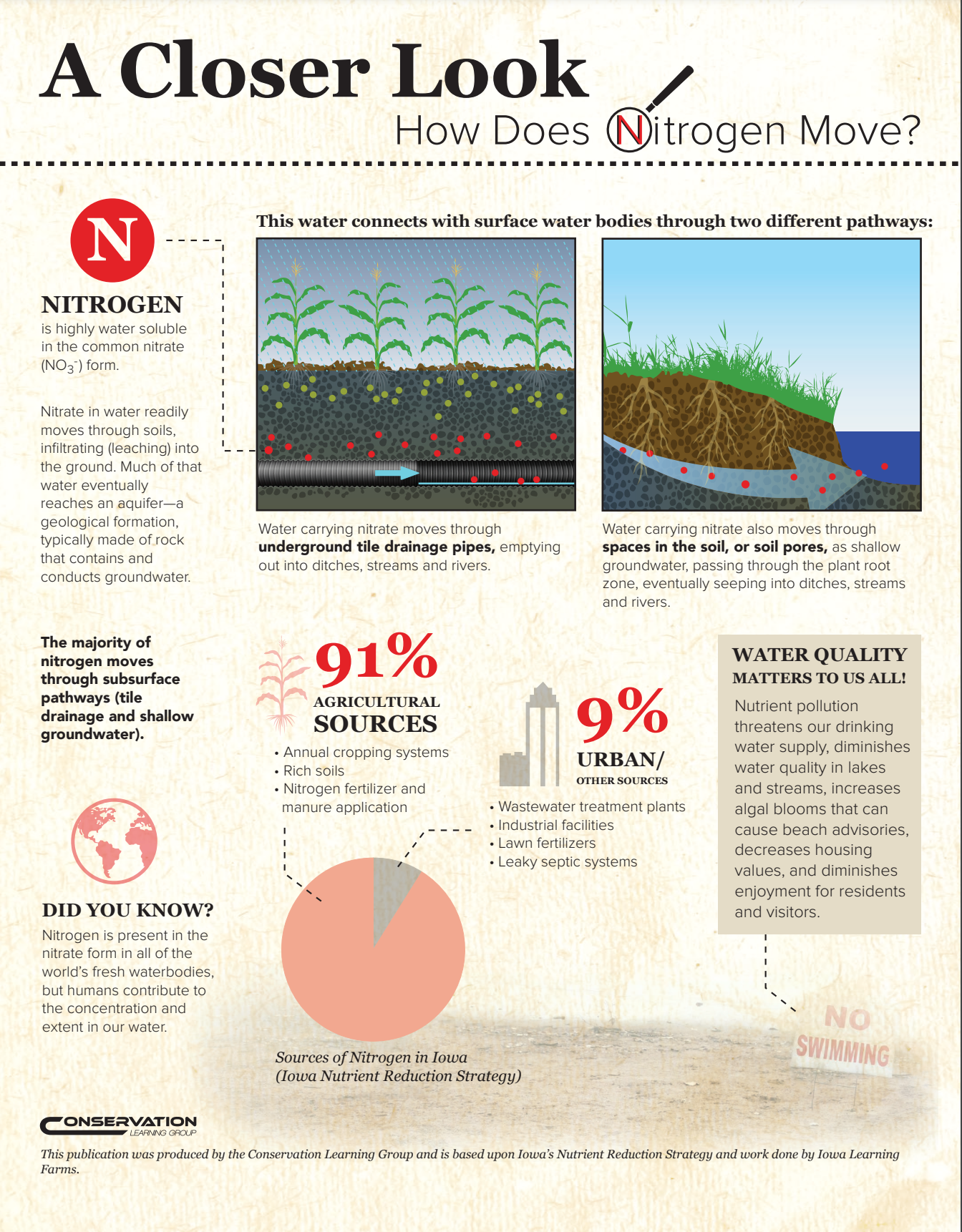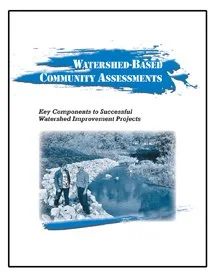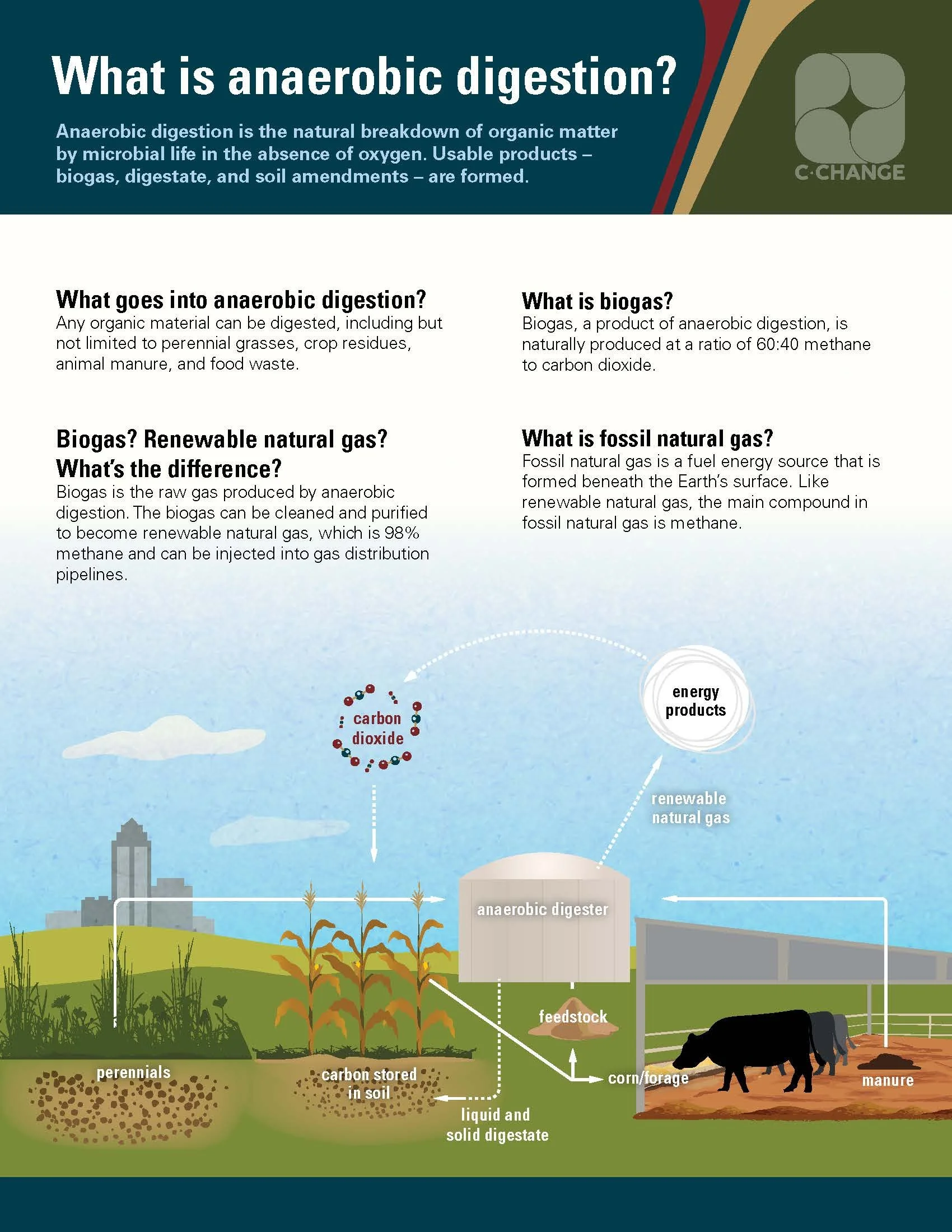Where does your drinking water come from? Two new infographics from the Conservation Learning Group take a closer look at that question and how nitrogen and phosphorus move on our landscape.
Read MoreThis illustration shows the relative stream delivery of nitrogen and phosphorus from each source, with the arrows sized proportionally.
Read MoreNearly 75% of Iowa’s landscape is farmland. Land management and conservation practices utilized by farmers and landowners play a key role in improving water quality by reducing loss of nutrients to waterways.
Read MoreNot all algae are harmful, but the most common harmful algal blooms in Iowa are comprised of blue-green algae—also known as cyanobacteria. Learn more in this infographic.
Read MoreThe Iowa Nutrient Reduction Strategy is focused on reducing nitrogen and phosphorus in Iowa waters. Farmers, landowners, municipalities, agencies, conservation organizations and everyday Iowans are collaborating to make changes to help meet nutrient reduction goals. This publication addresses some frequently asked questions regarding the Iowa Nutrient Reduction Strategy.
Read MoreNutrient pollution threatens our drinking water supply, diminishes water quality in lakes and streams, increases algal blooms that can cause beach advisories, decreases housing values, and diminishes enjoyment for residents and visitors. Learn more about the Iowa Nutrient Reduction Strategy efforts to improve water quality in Iowa.
Read MoreAssessing your watershed community's strengths and weaknesses is an important first step in planning and implementing an effective watershed improvement project. Without citizen "buy-in" to your watershed plan, it doesn't matter how much funding or technical support you may have, your project will not be successful. The toolkit can be downloaded by section in order to personalize your watershed's plan.
Read MoreThis Field Day Toolkit is the product of Iowa Learning Farms’ many years of planning and hosting field day events across the state of Iowa. While ILF utilizes many different outreach approaches, the importance of farmer-to-farmer interactions cannot be overstated. Field days do matter.
Read MoreBoth Wade Dooley and Nathan Anderson are a young farmers working to increase the resiliency of their farms using a combination of conservation practices, like cover crops, and livestock.
Read MoreAdam Janke is an assistant professor and an Extension wildlife specialist at Iowa State University. With research and outreach, Adam hopes to increase wildlife populations in agricultural landscapes in Iowa for generations to come.
Read MoreDiscussing a new conservation practice with your landlord can be challenging. To help begin the conversation, we created a new publication series with talking points and relevant research findings about specific conservation practices.
Read MoreA business model will help you stand out as a strong emerging farmer to potential landlords, lenders, and customers. It will also give you a pathway as you start your farming journey.
Read MoreView the Iowa Learning Farms video The Work of Our Hands (9:45) which discusses the relationship of societies and agriculture, historically and today.
Read MoreWhat is anaerobic digestion and how could it potentially work on your farm? Check out a new infographic for more information.
Read MoreCheck out our new infographic designed to help guide success in the first years of perennial vegetation establishment.
Read MoreCheck out the ILF video "Strip-Tillage Crop Management" in six chapters.
Read More






















